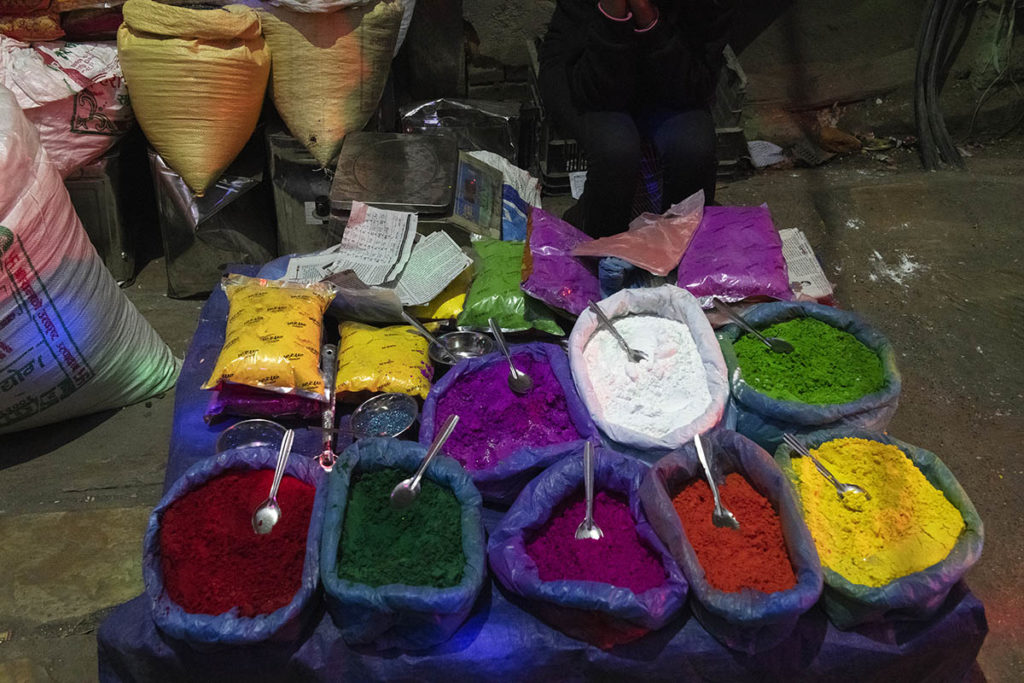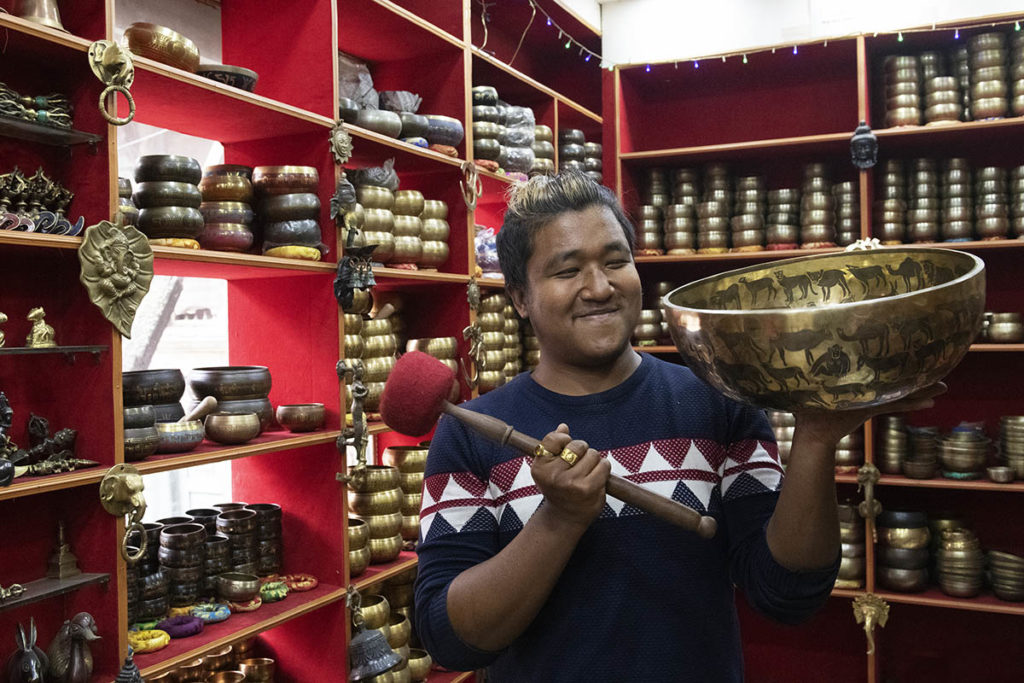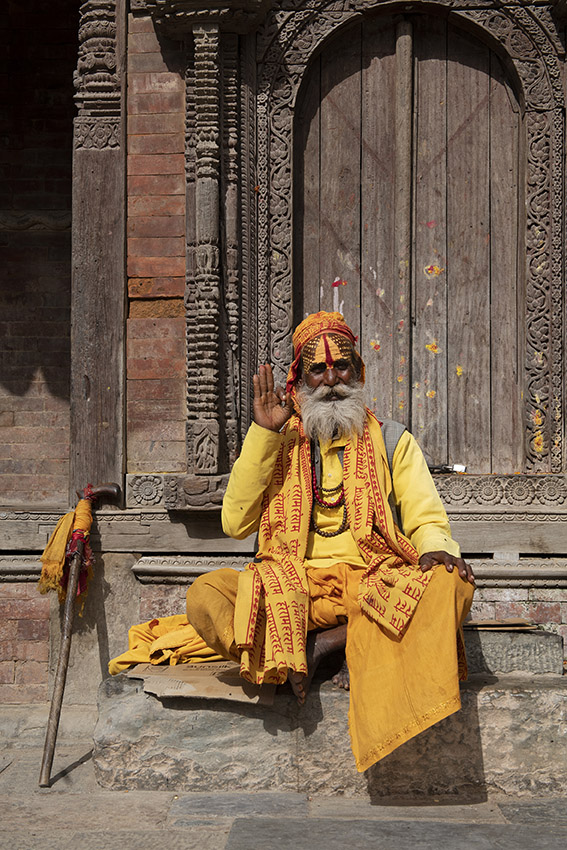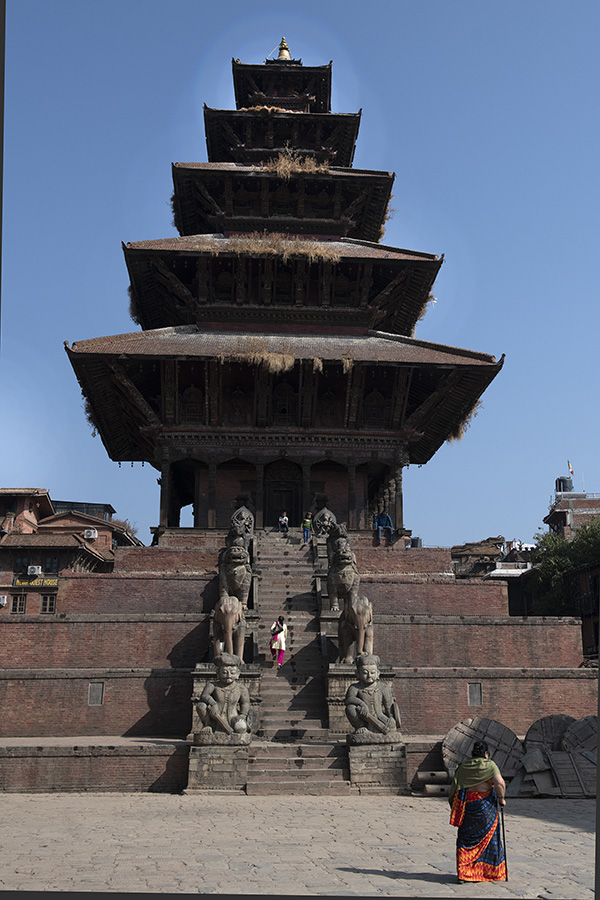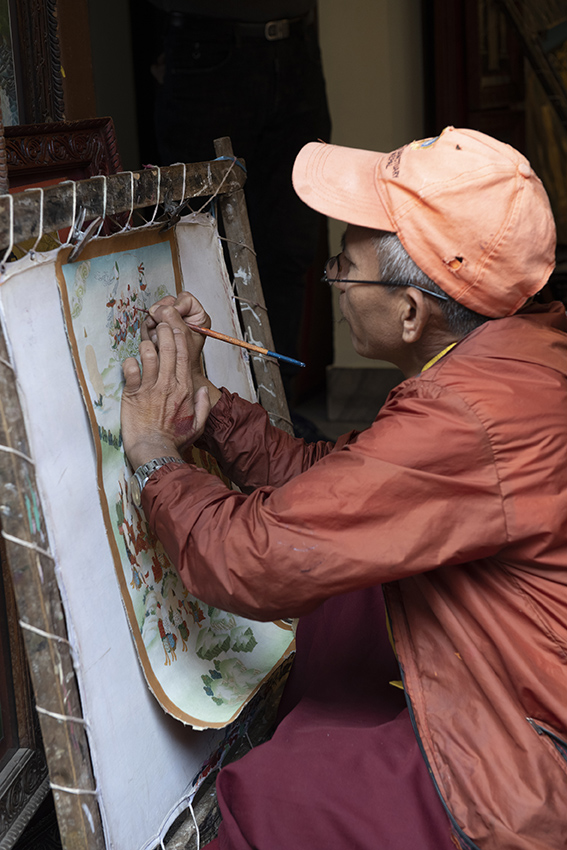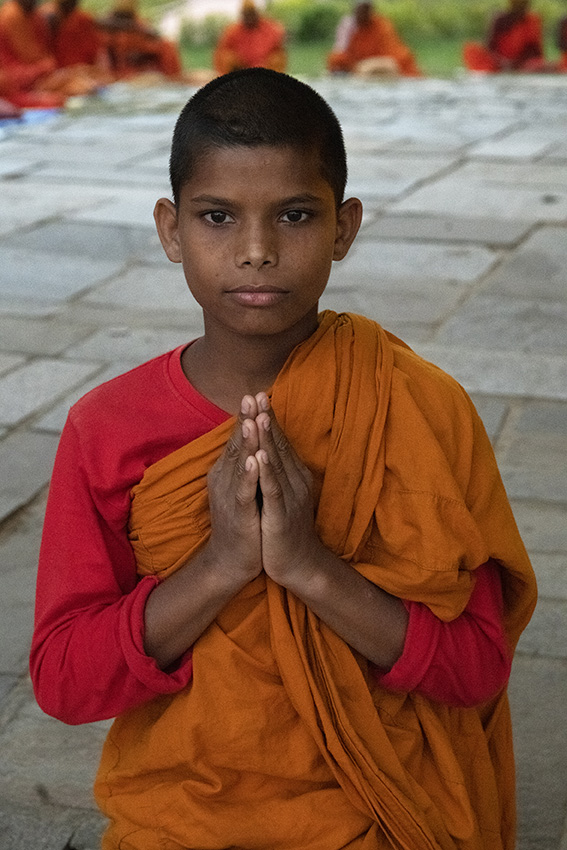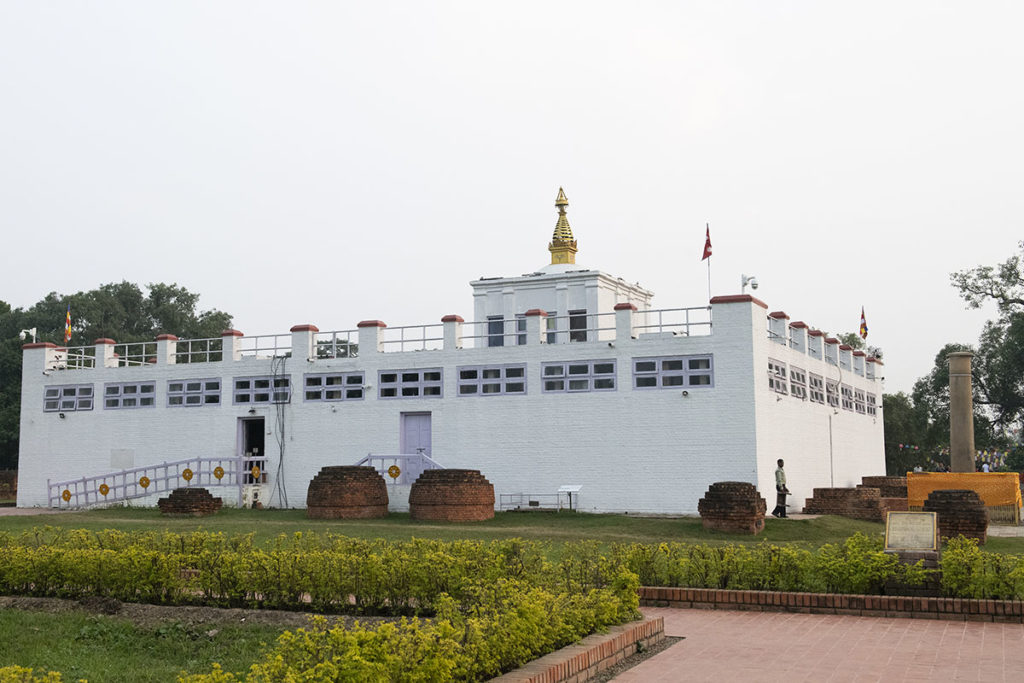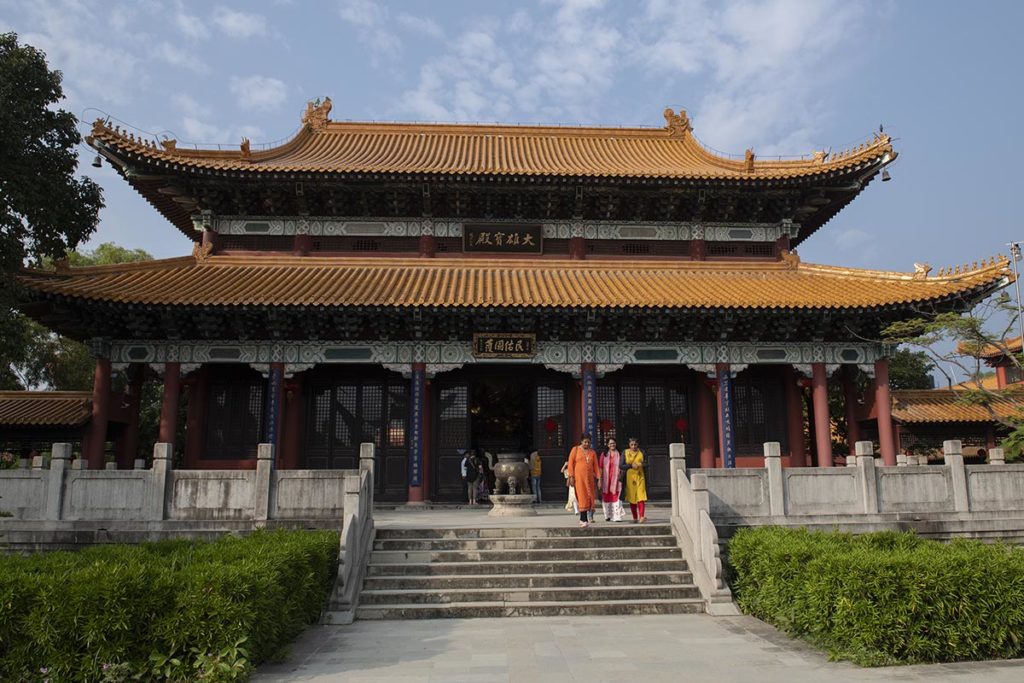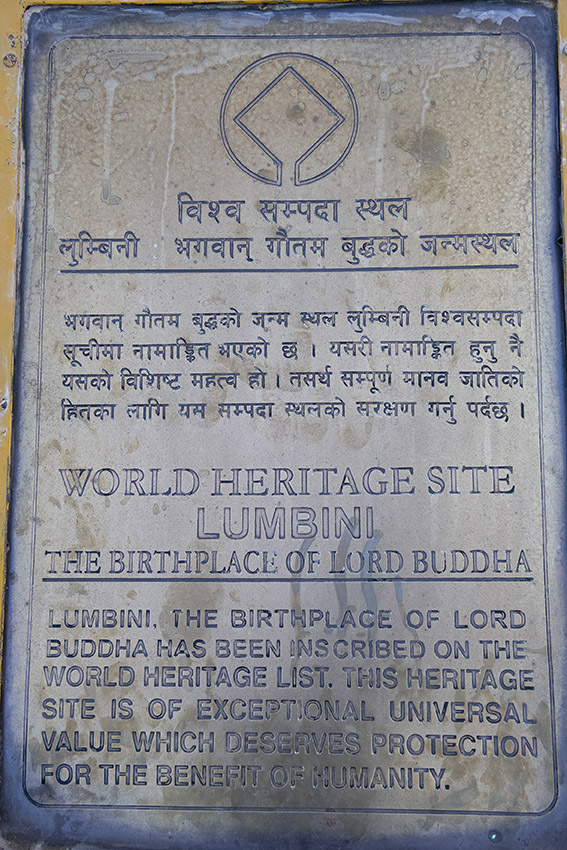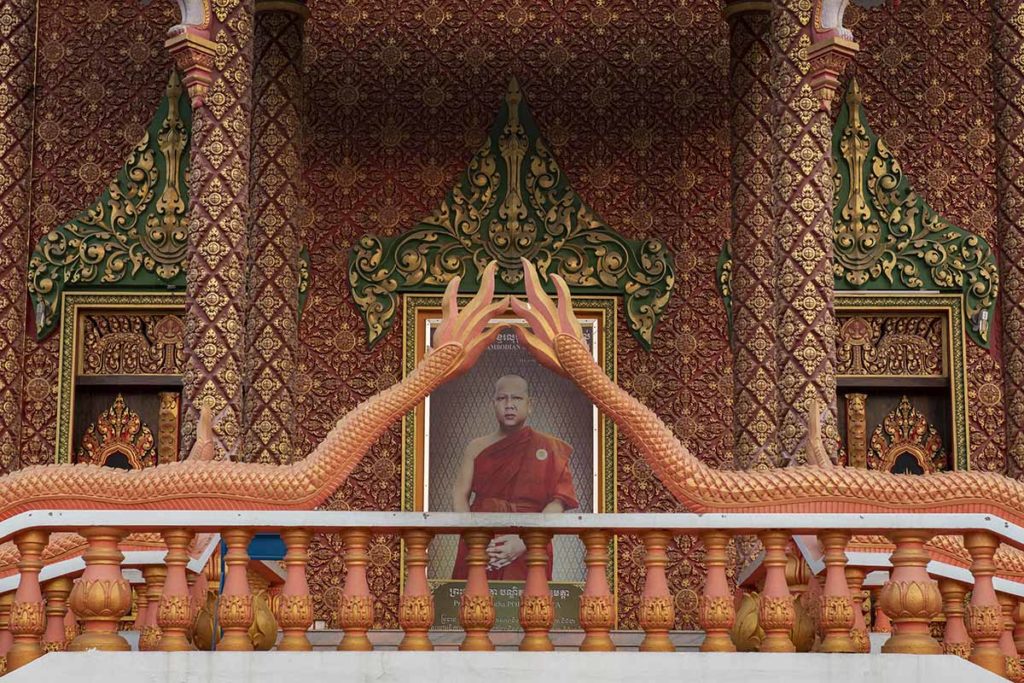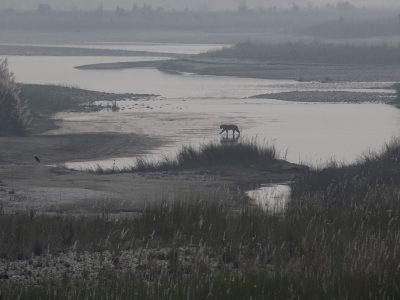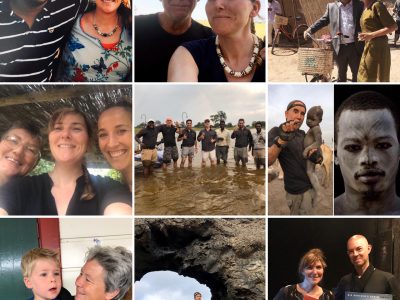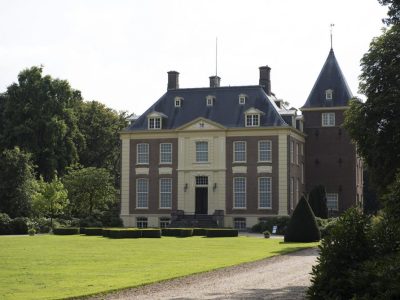Nepal is beside the beautiful nature also known for the rich culture of its ancient royal cities Kathmandu, Patan, and Bhaktapur. These places are easy to visit in two days with a guide like we did with Tiger Tops and are often a good starting point or beautiful end of a trip.
Text: Angelique van Os | Photography: Henk Bothof
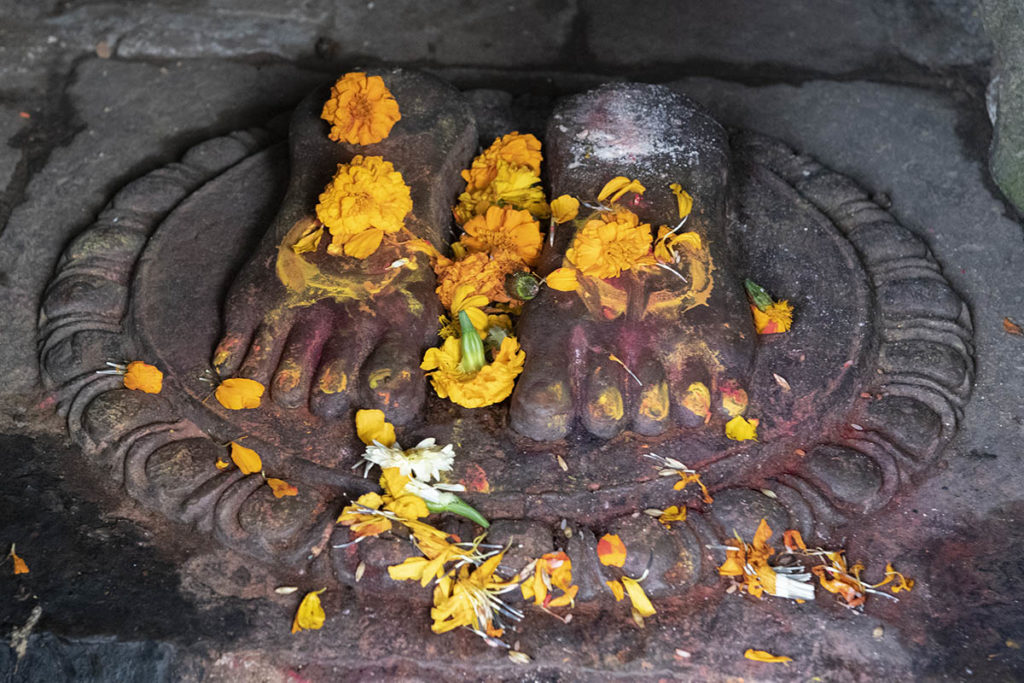
1. Kathmandu
A good start is the famous Hanuman-dhoka Durbar Square with its museums. Must see are the Jagannath and Kumari Ghar temples, with traditional Newari carvings dating from the sixteenth century. Feel free to get lost in the busy surrounding streets and stop by authentic shops, such as Chakra Bowls(Naradevi-18), where beautiful singing bowls are for sale. Nearby you’ll find the colorful Asan quarter, where locals come to buy fruit and vegetables.
In the village of Boudha, just outside the capital, is the famous white Boudhanath. The three-story stupa is decorated with colorful Tibetan flags and the big wise eyes, which ‘watch over’ the square. The district has the nickname ‘Little Tibet’ because refugees find shelter here at the approximately 29 Tibetan monasteries. At full moon, monks sing mantras at this spiritual place.
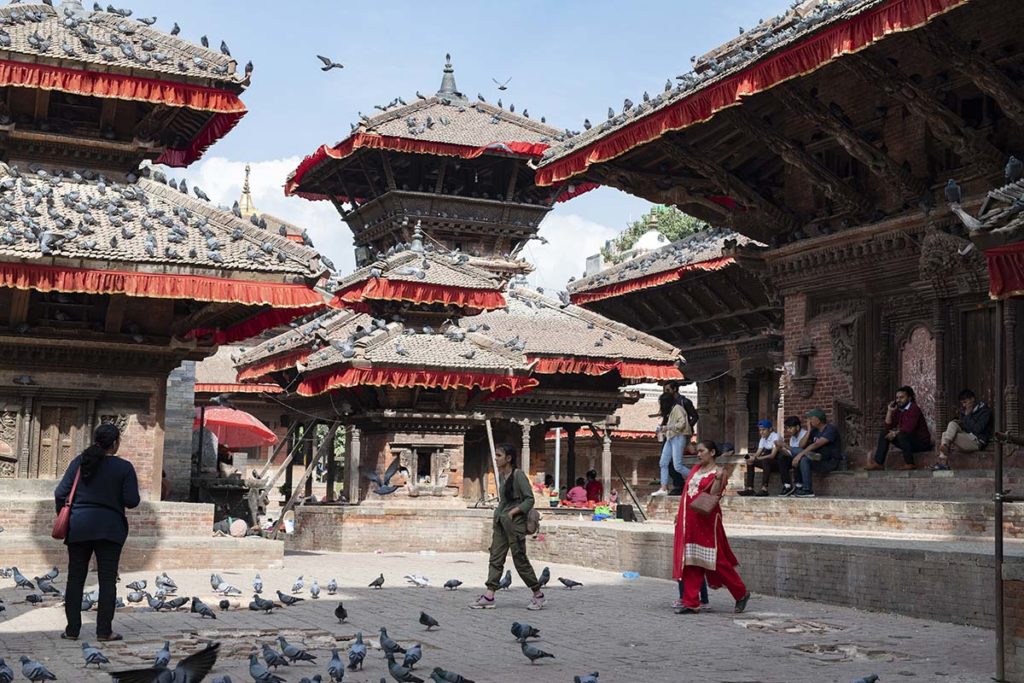
2. Pashupatinath
From Boudha you can walk to the nearby Pashupatinath, where impressive Hindu cremation rituals take place on the Bagmati River. At a suitable distance, you can attend these so-called ghats acts. The bodies wrapped in cloths are placed on a covered platform and carefully set on fire after saying goodbye. The next of kin watch this from a stone bench. The mortal remains disappear into the river. Also take a look at the entrance of the Shiva temple, which is only accessible to Hindus and dates from the fifth or seventh century. It is one of the largest Hindu temples in Asia and attracts many Indians. You’ll also find colorful saddhus (holy men and followers of Shiva).
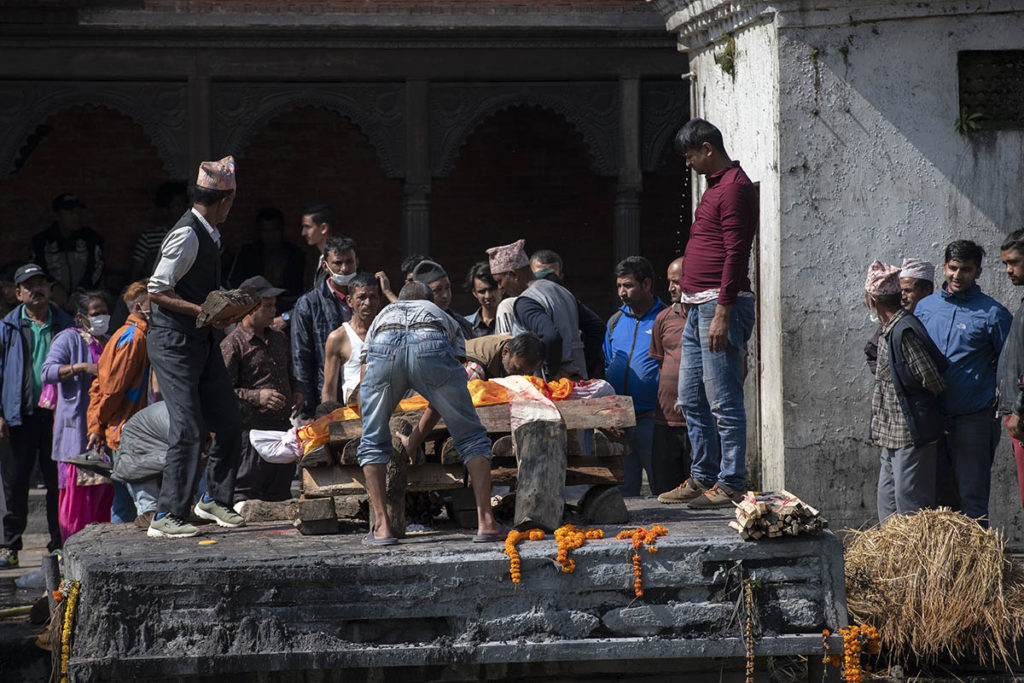
Next of kin prepare a deceased loved one for a cremation ritual. 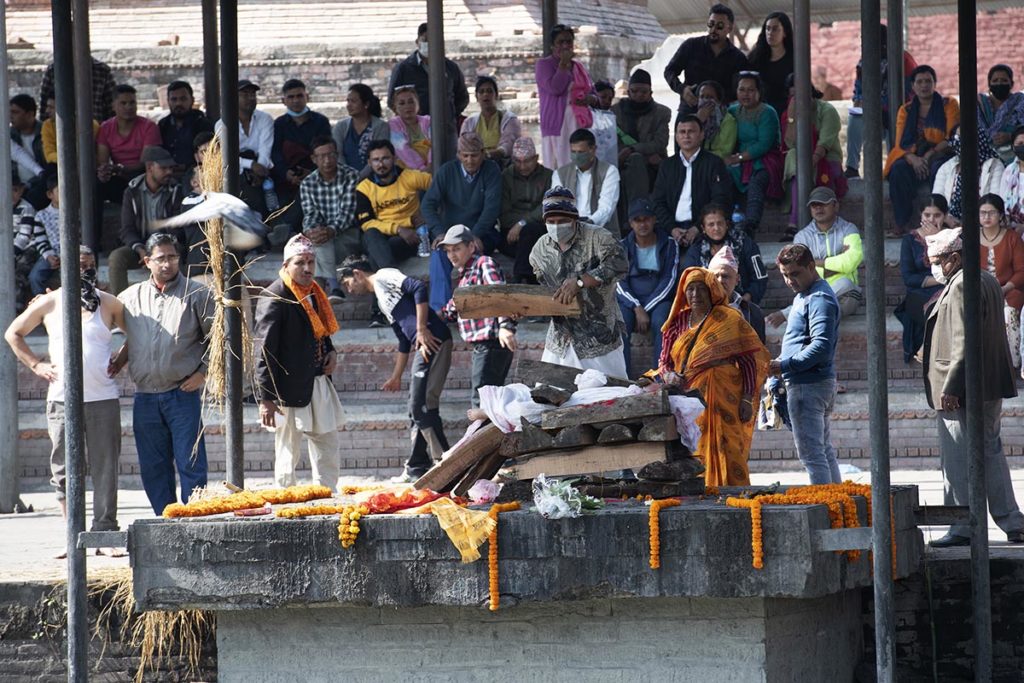
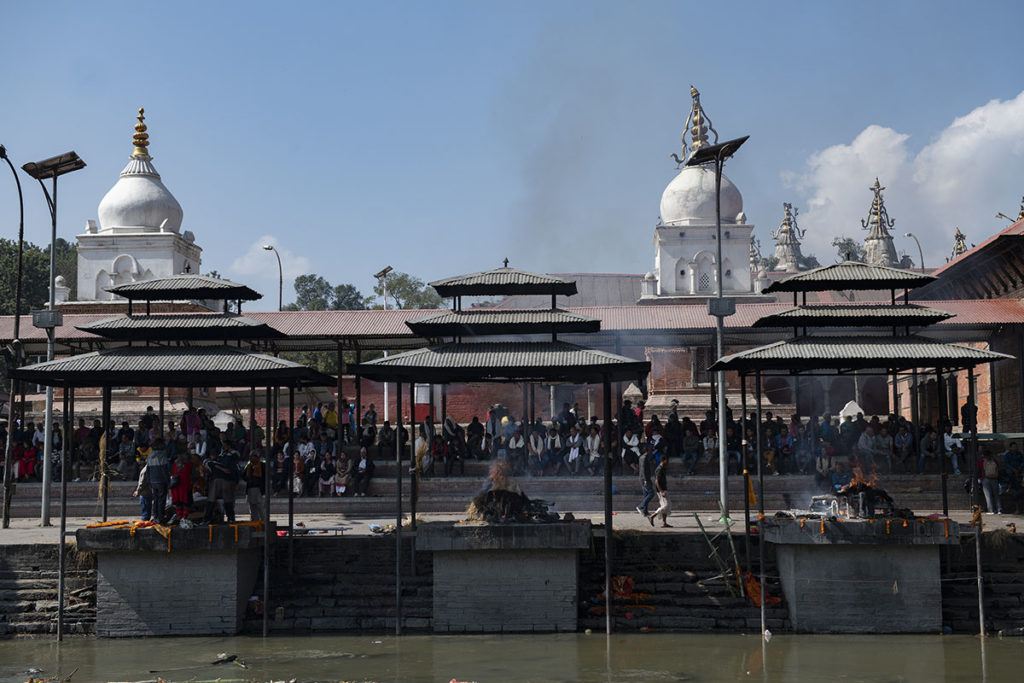
Cremation ceremony at the Bagmati River.
3. Bhaktapur
Just outside the town in the valley lies the medieval town of Bhaktapur. In the early morning, you have the beautiful Dattatreya square and temple, the Sun Dokha gate, and the Palace with its 55 windows to yourself. A different highlight is the (Hindu) temple Nyatapola on Tamaudhi square. This temple (1702) is with 30 meters the highest pagoda in the country and has five wooden floors above the stately stone staircase, which is richly surrounded by divine figures and beasts. Also stop off at one of the painting schools, such as Lama Thanka Centre, where students and masters make well affordable authentic works.
4. Patan
Perhaps the most beautiful and oldest temple city is Patan (Lalitpur). Durbar Square is full of pearls and tells legends of the 17th-century kingdom of Yoga Narendra Malla. Adjacent is the Patan Museum, which used to be the royal palace of the Malla Lordship. There are many religious artifacts and art on display. A nice ending is a visit to the Buddhist Kwa Bahalor Golden Temple (12thcentury). The temple owes its name to the gilded metal plates that cover the facade, as well as to the legend of King Bhaskar Verma who had a divine dream about a rat chasing a cat. If you look closely, you can see the gilded animals in the many decorations and statues.

5. Temple complex Lumbini
Between national parks, Chitwan and Bardia are located in the Rupandehi district. This is the birthplace of Siddhartha Gautama, or Buddha (623 BC). Since 1997, this temple complex has been declared a UNESCO World Heritage Site, but for thousands of years, it has been a pilgrimage that attracts many pilgrims from all over the world. Nevertheless, the average traveler often skips this special place, which is a pity. The site covers 3 kilometers, which is easy to do by bike or taxi. In the holy zone stands the Mayadevi Temple, which with a marking of archaeological remains indicates the exact place of birth. Outside the building is the Ashokan pillar, with on it the oldest inscription of Nepal and proof that Buddha came from here. At the sacred pond, where a birth ritual is said to have been performed, monks regularly meditate.
The Lumbini site further consists of Eastern (Theravadin) and Western (Mahayana and Vajrayana) richly decorated temples and monasteries, represented from all over the world. In some of these temples, the story of Buddha is imitated. Tip: go out with a guide, who knows the history well and knows the way. Best time to visit: Late afternoon, early evening. Lumbini is part of the All For Nature’s nature trip where you go on a tiger safari.
Also read other stories about Nepal, like our tiger safari and soon the tip about the Vulture Restaurant.

